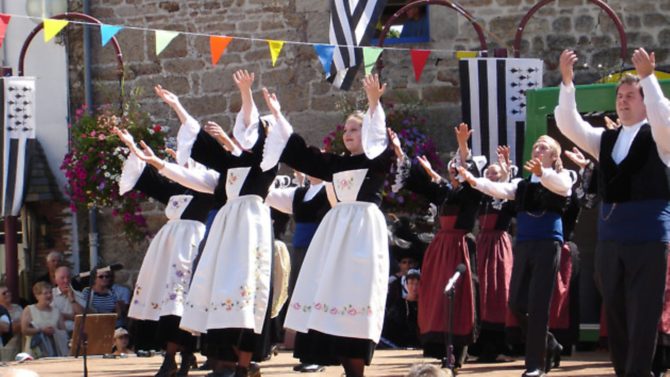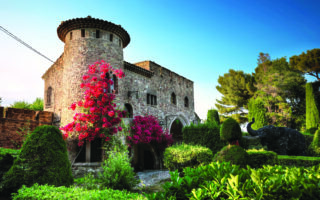Northern and southern France go head to head

Which part of France offers most — north or south? Glynis Shaw speaks to two gîte owners who argue their case for living and hosting guests in their chosen area

France is a large country with massive variations in landscape, weather, culture, local produce, sights and activities. Whether you love to go on holiday or long to relocate, it can be tough to decide which region would suit your taste and lifestyle priorities.
Our gîte owners are located all over France, but especially in the popular holiday areas – and some of them clearly have terrific enthusiasm for their corner of France. So I asked two such owners – one in Brittany in the north, the other in Languedoc-Roussillon in the south – to explain the appeal of their region.
NORTHERN SOUL
In August 1993, Ron and Sue Ollerenshaw grabbed a last-minute week’s holiday on impulse at a Brittany gîte. They were soon hooked by the setting and the peace and quiet – and then discovered that the owner happened to know somebody who sold properties to British buyers.
By Thursday they had singled out Poulmarvezen, a former farm close to the village of Ploërdut in Morbihan, and returned to England having left power-of-attorney with the local notaire.
“At the time, Poulmarvezen was nothing more than stone walls and leaky roofs, set in four acres of weeds and chest-high brambly woodland. But we loved it all – the honey-coloured stone, the swallows swooping and around us nothing but silent, heat-hazed farmland and woodland.”
The Ollerenshaws set about the major renovation task and now offer five holiday cottages restored and furnished to a high standard, each one sleeping either five or six people.
Outside is a mature garden, barbecue area and swimming pool. “It’s good to see normally hard-pressed adults unwind by the pool while their kids run free and make new friends in the woodland,” smiles Sue.
Ron and Sue love life in their Breton corner of northern France. “We’re real Francophiles now. The locals are very friendly and still take life at the same steady pace. They all know each other for miles around (assuming they’re not actually related) and are very polite, especially the younger generation. There is almost no traffic and you can roll along the lanes round here as if you were back in the thirties. Perfect for cyclists.
“In Gueméné-sur-Scorff, our local decent-sized town, you can park where you like with no wardens. There are plenty of shops, banks, bars, restaurants, doctors, dentists, vets and a wonderful French buzz about the place. On the last Sunday of every August there is an open-air Fest-Noz, a ‘night party’, with magical Breton line dancing and hypnotic Breton music. It completely evokes the magic and appeal of Brittany.
“As part of the north-south argument I would always argue in favour of the weather,” states Ron. “For us, further south would be just too hot, whereas in Brittany the climate is relatively mild, much like Cornwall.
“Summer is longer and hotter than in the UK and winter is not too cold, with some rain and some wonderful frosty mornings with lovely azure skies. If we’re lucky we get a few days’ exciting snow. You feel part of the earth here, even if you never actually broke your back behind a horse and plough.
“Another strong advantage for Brittany is its proximity to the UK – for us and our guests. There are ferries from Plymouth to Roscoff followed by a quiet 90 minutes’ drive along thinly populated roads – and in summer a service from Portsmouth to Cherbourg. Ryanair flies into Dinard and you can even take the train.
“Property is amazingly good value for such a beautiful and convenient place. One reason we would always wish to stay here is that it would cost two to three times more to own a similar property in the UK.” Visitors to Poulmarvezen have a huge selection of things to do. There is a beautiful coastline 40 minutes to the south, with numerous excellent beaches.
“Pont-Scorff zoo is a favourite, as are the historical stones at Carnac, and a trip down the Quiberon peninsula is quite special. At Les Rochers du Diable there is whitewater canoeing and you can walk or cycle the length of the Nantes-Brest canal, learn to drive a horse and trap or go pony trekking. You could spend three months here and still find new things to do.”
For historians the area is rich in historic churches and châteaux, for example Pontivy and Josselin, and every August there are several Son et Lumière shows at the ancient Bon Repos abbey near Gouarec, when a cast of hundreds of players in period costume are accompanied by horses, sheep, cattle and dogs, all set in a massive village/farm/château scene. Over a couple of hours the story of the abbey from Roman to present times unfolds.
“It’s an unmissable experience, again evoking the history and character of this special part of France.” Says Ron. “Sadly we will soon need to retire from running gîtes, but we will definitely still be living quite close by, in the place we’ve come to love so much.”
SOUTHERN STAR
Sabine and Graham Peek are no strangers to France, having lived and worked in Paris and other locations for many years. But it was in the relatively undiscovered Hérault department in Languedoc-Roussillon that Graham, originally from the UK, and Sabine, from Germany, finally chose to settle three years ago, near the medieval town of Pézenas.
The couple bought a stylish, pink-washed villa with a garden that features a swimming pool and palm trees, and created a two-bedroom gîte on one self-contained floor. They named the gîte 4 Paws, both in honour of their tabby cat and because it is a place ‘for pause’. They now take pleasure in sharing their knowledge and love of the region with guests.
“The views from our sun-drenched corner of paradise are spectacular and the nearby Roman village of Roujan feels far away from the madding summer crowd”, says Graham. “Languedoc is where the Cathars were established between the 12th and 14th centuries and even today you can imagine villages hidden and protected from the outside world with guards posted to warn the villages of intruders. There is a real sense of history, a certain atmosphere that lingers, as though this part of the world was frozen in time.
“We were drawn to Hérault for its natural beauty and potential. It has a wonderful Mediterranean climate – the sun shines 1.6 times more often in Roujan than the average in France as a whole and eating outside, even in December, just happens. Even with all this sunshine, property is affordable – certainly by no means as exorbitantly expensive as the Côte d’Azur and Provence. This is an uncrowded region and yet the infrastructure is good, with five airports acceptably close by, plus the TGV and motorways. We have the feel of living in the countryside yet in the village there is a supermarket, gas station, doctors, post office, butchers and bakers, all easily accessible.”
Graham and Sabine have observed that it is not always easy to find work in the area, as salaries are kept low because people have the lifestyle advantages of living in the sun in the south of France. Yet they believe there are many opportunities for business creation in service industries, especially tourism and care of the elderly, if you have ideas and the acumen to set up a business activity. The cities of Montpellier, Nîmes, Arles, Carcassonne and Narbonne are all close by and there is easy access to the major capitals of Europe for management and consultancy assignments.
The 4 Paws gîte is open to guests all year round and there is plenty to do and see in Hérault for both residents and holidaymakers.
“Throughout the summer months, we have a rich abundance of cultural, art, theatre and music festivals, from opera and classical to jazz and rock, and some of them are held in Cathar or Roman cities dating back over 1,000 years”, says Graham. “We are located between mountains and the sea, so in one direction you can sunbathe and swim on the long, sandy beaches of the Mediterranean and in the other walk the moorlands of the Garrigue, hike or go skiing in the mountains or the Cévennes national park or ride horses in the Camargue. The countryside is stunning, with breathtaking views and numerous olive groves and castles.”
The south of France also abounds with vineyards. “Both we and our guests appreciate the exquisite and distinctive wines to be discovered and tasted here – and the very good food to be found to accompany those wines. This may be in restaurants or from the tempting local produce – seafood, seasonal fruit and vegetables, high quality meats – all purchased in a leisurely way at colourful markets where shopping is a pleasure.”
“We love southern France and its way of life. Of course the sunshine is a massive appeal, but it’s also the atmosphere and the people that are both so welcoming. Folks smile!”
Glynis Shaw is joint MD of French Connections holiday rentals and property sales online
Tel: 01580 819303
frenchconnections.co.uk
Poulmarvezen is ID 149174
4 Paws is ID 159801
Share to: Facebook Twitter LinkedIn Email


